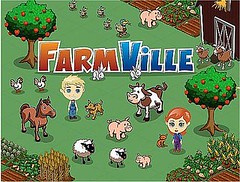Morgan Tocker has an awesome article and comment thread in the MySQL Performance Blog about When should you store serialized objects in the database? Before the NoSQL age is was very common to simulate schemalessness by storing blobs in MySQL. Sharding was implemented by running multiple MySQL instances and spreading writes across them. While not ideal for the purpose, developers felt comfortable with MySQL. They knew how to install it, back it up, replicate it, in short: they knew how to make it work. Yet they also needed to store objects without the penalty of joins. Searches and aggregate queries were handled by indexes kept in separate tables, this offloaded the fast path to objects.
This all made perfect sense. Usually we just want stuff to work and going with what you know is often the best path to that goal. And what we have known is MySQL. All the different pros and cons of this approach are covered wonderfully in the post.
But the world has changed.
Click to read more ...
 Tuesday, February 16, 2010 at 7:40AM
Tuesday, February 16, 2010 at 7:40AM 















 If real farming was as comforting as it is in
If real farming was as comforting as it is in